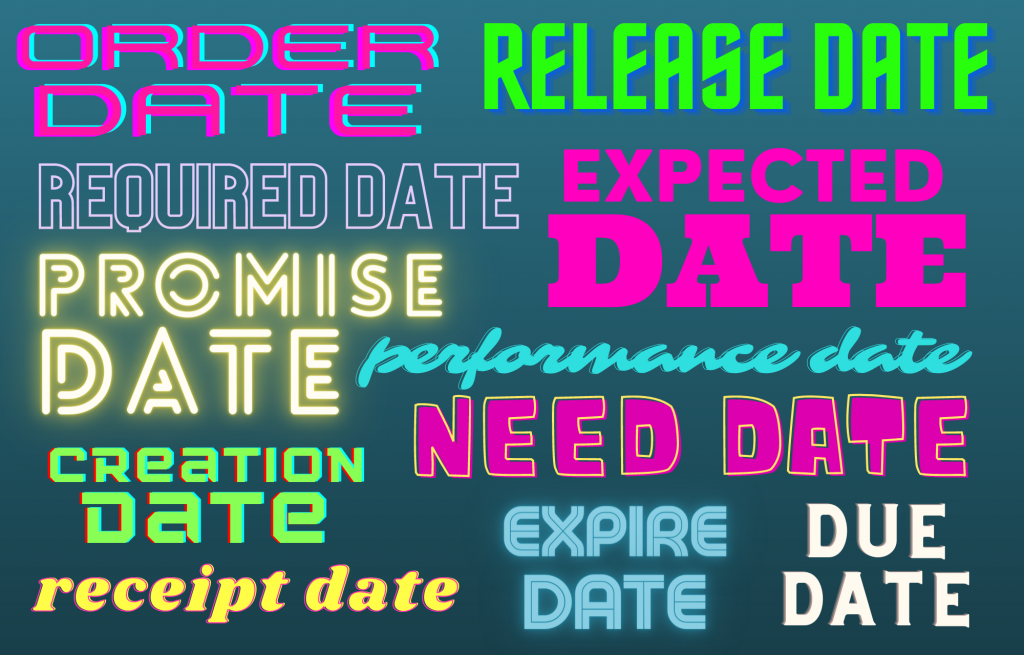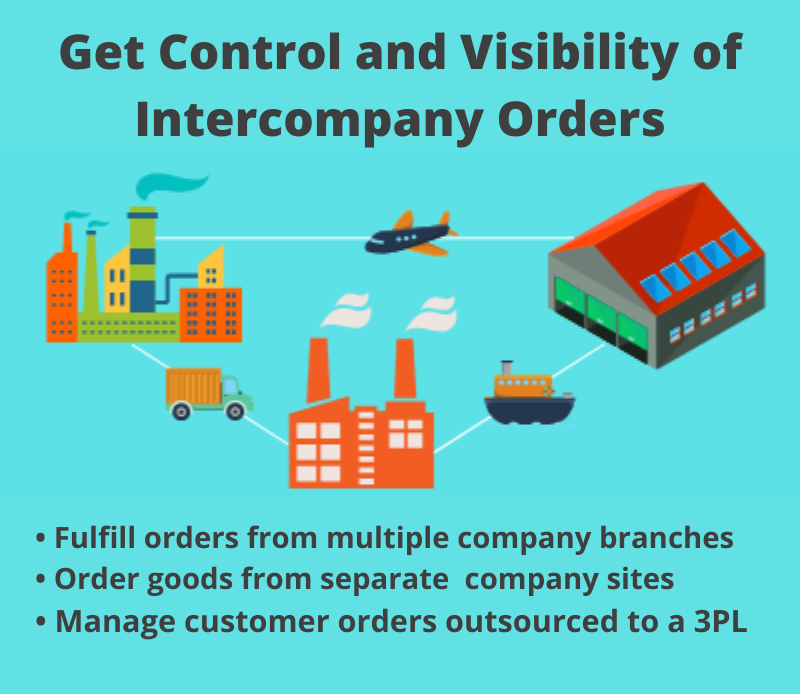 Don Lindsey
Don Lindsey
Keeping transaction dates accurate in QAD is critical to the operation of your ERP System. Dates play an enormous role in ensuring on-time delivery of material from suppliers, a smooth-running production schedule, and a timely delivery of your product to your customer.
Dates are also instrumental in keeping your system SOX compliant and valuable in measuring KPIs, as most KPIs have at least one date component associated with them.
Your company should keep a data dictionary of the definitions and usage of all date fields in QAD. By doing so, you make sure everyone understands what each date represents, and such dates are used consistently throughout your organization.
Let us look at the primary dates in QAD’s operational transactions.
Creation/Add Date
The Creation/Add date is the date when data is first added or created in a table. The default is the system date.
For SOX compliance and accurate measurement, you can and should apply security to this field to control access.
There are 31 fields in QAD in 20 tables that contain Creation/Add Dates.
Order Date
The Order Date is when a sales order, customer schedule, work order, cumulative order, distribution order, purchase order, or supplier schedule was recorded in QAD. The default is the system date. Order dates impact SOX compliance and other issues such as revenue recognition, so must be correct.
You can apply field security to restrict access if required.
There are 403 fields in QAD in 213 tables that contain Order Dates.
Due Date
The primary drivers of everything in your ERP System, Due Dates in QAD are used for sales orders, customer schedules, work orders, cumulative orders, flow schedules, production orders, requisitions, purchase orders, and supplier schedules. They need to be the exact representation of your supply chain and its operational reality.
Due dates let the system know that the right quantity of material is on-hand for shipment, that inventory is available when MRP calculates its needs, and when a forecast is required. All the essential tools of ERP revolve around the accuracy of the due date.
If you use the Shipment or Supplier Performance modules, you can specify the due date in several reports as the baseline performance date compared with your shipping, receipts, and other dates.
There are 607 fields in QAD in 291 tables that contain Due Dates.
Required Date
The Required Date in QAD is the date when the customer wants to receive an item. It is used to stipulate done by, made by, or provided by dates. This date is critical to the supply chain as it represents your customer’s desires. We all know that a happy customer comes back and orders more from us in the future. Strict communication with the customer is necessary to ensure the required date is accurate.
There are 86 fields in QAD in 66 tables that contain Required Dates.
Promise Date
The Promise Date in QAD is when items are promised to arrive at your customer’s location. Promise dates are very reactive to changes in the manufacturing and supply chain fluctuations, so maintaining this date’s accuracy is critical to establishing trust with your customers. These dates should be reviewed and updated weekly, if possible.
There are 6 fields in QAD in 6 tables that contain Promise Dates.
Pricing Date
QAD uses the creation/add date to apply the correct price list for an order. If you want to use a different Pricing Date, you can set the 1.10.1.24 Pricing Control menu to default a pricing date. If you leave the price list field blank during order entry, the system uses one of the five dates specified on the sales order header: Order Date, Required Date, Promise Date, Due Date, or Performance Date to set the price list and price date defined in Pricing Control.
There are 298 fields in QAD in 124 tables that contain Pricing Dates.
Expected Date
If you use the Return to Supplier functionality in the Service and Support module, the Expected Date is when you plan to send the items to the supplier for repair or replacement. If this field is left blank, the system defaults to the order date. The date entered on the header displays as the date for each RTS line item returned to a supplier. It can be changed manually as needed.
There are 16 fields in QAD in 14 tables that contain Expected Dates.
Need Date
When using the Requisition Functionality in Purchasing, the Need Date is when the requisition or creator needs the delivered material.
For requisitions created using the Planned Purchase Order Approval function, the need date corresponds to the MRP planned order due date. For manually entered requisitions, the need date is calculated using the system date plus the item’s purchasing lead time.
If the requisition is for an inventory item, the need date is when the items must be in stock and available for shipment or issue to manufacturing.
MRP uses this date as the due date of the planned order receipt from which to explode. If this date arrives and a purchase order has not been entered for the requisition, MRP prints a Past Due Release action message.
There are 12 fields in QAD in 11 tables that contain Need Dates.
Release Date
The Release Date for a Work Order is when the order has been or will be released to production or shipping. When you release and print the work order through 16.6 Work Order Release/Print or 16.7 Multiple WO Release/Print, the release date automatically changes. The release date for purchase orders is when a purchase requisition should be released to receive the items in enough time when needed.
There are 65 fields in QAD in 48 tables that contain Release Dates.
Receipt Date
Receipt transactions increase the perpetual record, which continuously updates the quantity on hand along with the audit trail.
Typically, a receipt transaction will debit the on-hand quantity and the general ledger account defined in 1.2.1 Product Line Maintenance and credit whichever receipt the transaction affects—a purchase order, a schedule, a cumulative order, or a work order.
The receipt date helps to establish the date of completion and is used in performance monitoring and execution.
There are 171 fields in QAD in 87 tables that contain Receipt Dates.
Performance Date
The Performance Date is the date by which items are available to ship. Many factors can affect availability to ship, so it needs to be consistently monitored and updated.
There are 12 fields in QAD in 14 tables that contain Performance Dates.
Shelf-Life Date
As entered in 1.4.1 Item Master Maintenance or 1.4.5 Time Inventory Data Maintenance, the Shelf-Life Date is the number of calendar days that this item can be held in inventory before it becomes unusable. Shelf life is typically defined for items that spoil or degrade over time (think COVID vaccine).
You can use shelf life to help set the expiration date for Lot or QOH inventory expiration date in the date of receipt plus Shelf Life from Item Master.
The expiration date does not usually appear on picklists, but an error message displays if you try to ship or issue any expired inventory.
There are 4 fields in QAD in 3 tables that contain Shelf Life, and 52 fields in QAD in 49 tables that contain Expiration Dates.
Summary
Transactional dates in QAD, such as the date of execution, the date of promise, the date of release, etc., are critical to the operation of both your MRP planning process and your operational work order, purchase order, scheduling, sales order, and demand process.
It is important to take great care to ensure that these dates reflect your organization’s actual and planned activities. Then and only then can you accurately use your QAD ERP system to enable you to execute and deliver your product to your customer. To learn about additional dates in QAD, watch our webinar replay, QAD Dates: How Data is Driven.
32 Soft’s Data Loaders can help you manage and update dates in QAD quickly and efficiently. We have dozens of Data Loaders for every major QAD data management process and you can try them with a complimentary 60-day trial to see how they can help you more easily and productively manage your QAD data. Click here for more information.
This article was originally published in the Midwest User Group Newsletter, Winter 2021
Don Lindsey, CFPIM, CIRM is a knowledgeable Implementation Project Manager, Trainer and Business Analyst for all areas of QAD. He has been an implementation manager on several large, complex MFG/PRO projects, and has worked with the QAD system since 2007 in Manufacturing, Systems Management, Service & Support, and Finance. Don has a diversified background in a wide variety of manufacturing industries from Medical to Electronics to Industrial to Consumer Products. He has spoken for many years at the APICS Conferences, having taught in the APIC Certification program at California State University @ Fullerton for more than 20 years.




